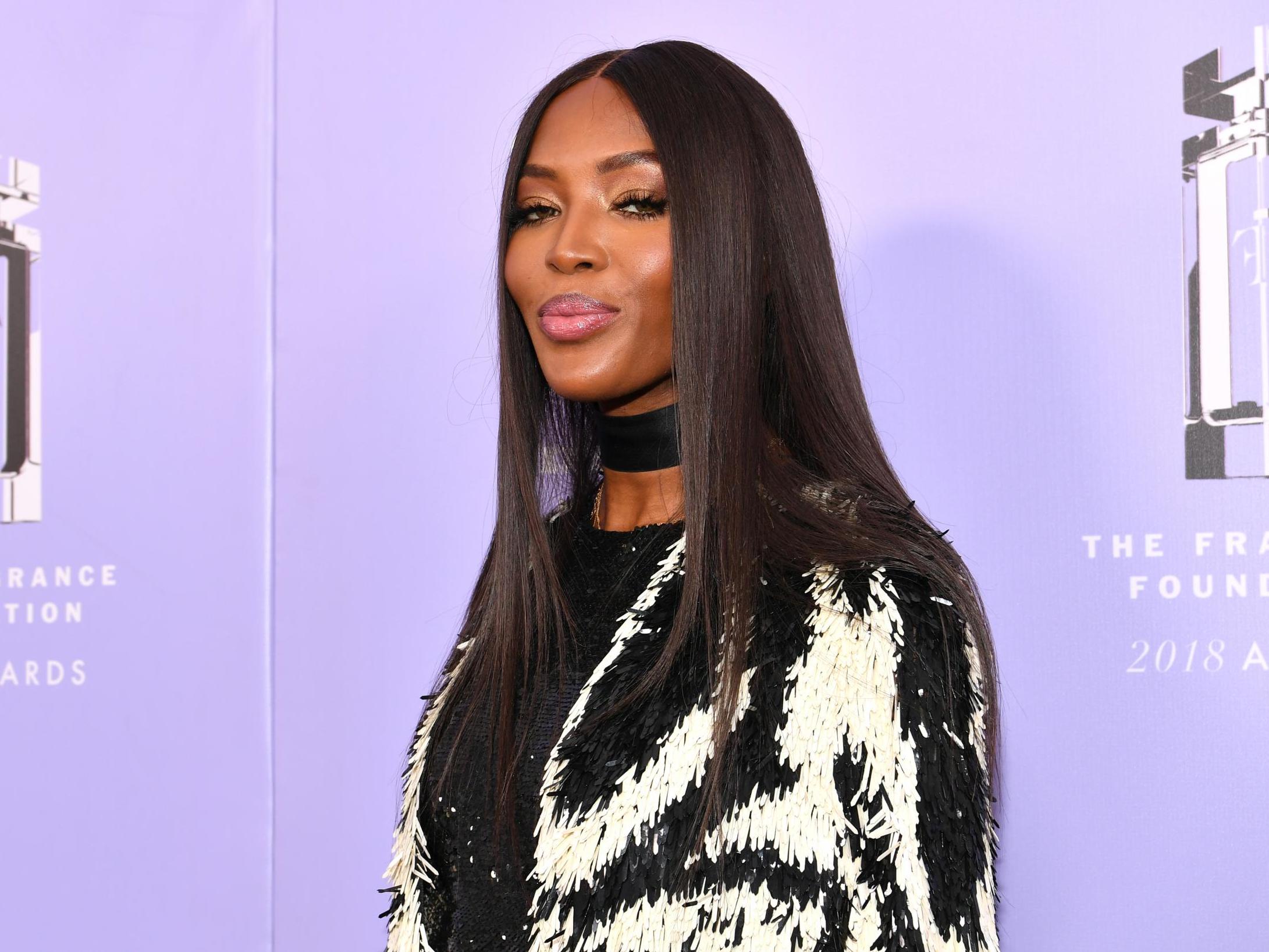Steroids, wigs and disinfectant: Afro alopecia needs research, not ridicule
Hair loss is a particular social stigma for black women, and the shame involved is compounded by a worrying lack of awareness of the varying ways in which alopecia presents itself in afro hair. Kuba Shand-Baptiste talks to fellow sufferers and hears how a recent genetic breakthrough may point the way towards a solution


You can tell a lot about a person by their hair, or so tradition has led us to believe over the centuries. Just look at the lengths we’ve gone to to reframe what is, in the most basic sense, a mass of dead protein that grows lifeless from our scalps, into an emblem of the most vital and intimate parts of our identities.
The enduring social significance of hair has served as a cross-cultural marker of everything from affluence and power to spirituality, sexuality and fertility across a number of civilisations.
From ancient Greece’s reverence for hyacinthine and golden hair, to the lengthy, shiny, ornamental tresses of traditional, 15th century Wolof women in Senegal, right down to the observance of kesh in Sikhism – for centuries, hair is, and has been, everything. But what of those among us who no longer have it?
The global hair loss industry has been said to be worth around $8bn (£6.3bn) according to a report from Grand View Research. As recently as last month, that figure was projected to rise by as much as $4bn, with the alopecia market predicted to rake in over $12bn by 2025. Separately, the hair transplant industry alone is expected to hit an astronomical $24.8bn in the next five years. Clearly, losing hair is big business – so why aren’t we talking about it more?
Over 12 years, I probably lost an inch a year, although I was probably losing more than an inch, because your hair grows at around 0.9-1.2cm per month
Androgenetic alopecia, or common, inherited hair loss, has been low-hanging fruit for some time. It’s found in around 30 per cent of mostly white men under 30 (black men and Asian men have been said to present lower rates of hair loss, although studies pointing to exact rates among groups other than white men and women are few and far between); 80 per cent of white men over 70; 3-6 per cent in women under 30 and up to 42 per cent for women over 70. Perhaps because it’s widespread, but also, I suspect, because it’s been misunderstood as a uniquely male, yet minor cosmetic problem, we tend to reframe the turmoil of experiencing hair loss as a non-factor, typical for the average middle-aged man.
While the role of androgens in female androgenetic alopecia used to be considered less certain than in men due to a lack of research in that area as recently as a decade ago, women are still affected by the condition.
But overall, regardless of gender, in most studies about various types of alopecia, it’s the acceptance of one’s condition, rather than deep embarrassment – sometimes to the point of suicidal ideation – about having it at all, that holds people back from being open about what they’re going through.
Is it really any wonder, given the rigid social norms that have been foisted onto hair (and the lack or abundance of it)? The Bible itself, as Anthony Synnott’s seminal study “Shame and Glory: A Sociology of Hair” notes from the off, upholds these fixed notions of what makes us who we are. As the Pauline epistle states: “Doth not nature itself teach you, that if a man have long hair it is a shame unto him? But if a woman have long hair, it is a glory to her”.
Of course, not everyone subscribes to biblically informed ideas about how people should or shouldn’t present their hair. Even if we did, we’d be pretty inept at following it to a T – millions of us suffer from various forms of alopecia across the UK as it is.
And when it comes to parsing the psychological impact of that loss, of course most people’s instincts drive them to secrecy.
Ignorance is the very thing that kept Lorna Jones, a soft-spoken, but by no means impassionate trichologist, in the dark about what was happening to her when she first began to lose her hair years ago.
“I didn’t notice that I’d lost 12 inches of hair at first; my hair was always down to my back. But over 12 years, I probably lost an inch a year, although I was probably losing more than an inch, because your hair grows at around 0.9-1.2cm per month.
“But that was fine. I lost the length, didn’t notice it. But what I did notice was when I started getting patchy bits. My sister found them when she was doing my hair once years ago. I also caught my reflection on the CCTV camera on the bus going to work a couple of years ago, and noticed my parting was getting wider.”
It wasn’t until Jones had tried several specialists, many of which, back then, lacked any definitive knowledge about the varying factors that can help to stem alopecia in afro hair, that she decided to take things into her own hands.

“How could something be happening to your body and you don’t have any control over it? And specialists can’t help me?
“When you’ve got an auto-immune condition and your body is fighting with itself, there’s nothing you can do, but at least I was in control by trying to get information,” she says.
Not long after, Jones, who now runs her own clinic, Caring for Hair, in Forest Hill, southeast London as well as central London, took it upon herself to do some digging about her condition by visiting a GP.
After a referral to a dermatologist, and following that, a referral for a scalp biopsy, Lorna was given steroids to deal with her hair loss.
But rather than stemming the shedding, she lost more of it.
“I stopped taking the steroids after that. The biopsy was about another six to nine months, and then another nine months later, I got my appointment to talk about my results.
People who’ve never had to wear a wig will not understand, but I missed that natural feeling of the wind blowing through my hair, even if I was losing it
“For me, my lightbulb moment was when the doctor came back into the room and said: ‘Good news, you’re well’.
“And I thought, ‘I didn’t come here because I wasn’t well. I came here because I was losing my hair.’”
It was then that Jones realised that doctors may never have an answer for why she was losing it. What they had been looking for were signs of an underlying medical issue that may have been causing her hair loss. They were not looking for a solution for combating what she soon learned was not alopecia areata – an autoimmune form of hair loss which can, on occasion be slowed down through the use of treatments like the ones she received – but she was told was scarring alopecia, or central centrifugal cicatricial alopecia (CCCA), wherein, according to Jones, “your hair follicles have been completely destroyed, so there’s no way any hair can grow again”.
The solution she was given, after learning of her doctor’s opinion, was that she “would always need to wear a wig”.
So she did. For a short while.
“I got the wig made and then a few weeks later, I though: ‘But I wasn’t born with a wig. I don’t need this’ and took it off.
“I remember driving in my car on a Saturday afternoon. My windows were down. And I remember as I was driving, the breeze was blowing through my hair and I thought it was just magical, because for six months prior, I had a wig on.
“People who’ve never had to wear a wig will not understand, but I missed that natural feeling of the wind blowing through my hair, even if I was losing it. So at that point, I wanted to use my own education and my own passion to learn more about what was happening to me and people like me.”

Fed up with the expectation to hide her hair loss, Jones never looked back and went part time in her job in social housing to pursue an education in trichology, a journey that took her around the world for her clinical training.
But it was in Washington DC in particular that she learned of the prevalence of CCCA among black women.
“They used to call it ‘hot comb alopecia’, because the thinking was that the hot oil that came into contact with the hot comb was burning people’s scalps and killing hair follicles. And then they realised actually, some of the women they spoke to had never used that. Then it was thought that it was a result of relaxing your hair. Some of the relaxers do have that effect, but again they realised that some of the women who complained about that type of alopecia had never permed their hair.”
It wasn’t until recently that new research, the first of its kind in the world, revealed a possible gene that could explain the hair loss without solely focusing on hair care practices as a cause.
In March 2019, South African dermatologist, and the University of KwaZulu-Natal’s dean of clinical medicine, Professor Ncoza Dlova, published a study in The New England Journal of Medicine. It identified a gene among a group of black women called “peptidylarginine deiminase 3 (PAD13)” which impacts “proper hair shaft formation” and had “mutated in the majority of affected patients, suggesting that the disease is genetically heterogeneous” – meaning that genetic defects can “predispose individuals to CCCA” and can be “triggered by environmental factors like damaging hair grooming practices like use of hair chemicals, traction, heat, braids and weaves”.
“It’s such an amazing breakthrough”, said Jones, who believes that more research in this area could lead to more effective treatments for black women in particular, many of whom have long been plagued by the idea that experiencing hair loss is somehow a signifier of one’s worth, or a sense of carelessness when it comes to grooming.
But then I noticed the stench. It smelt like disinfectant, it looked like disinfectant and he washed my hair with it and sent me on my way
It also points to the ways in which a lack of research on certain communities impact our understanding of scientific and social issues in Britain. It was only last year that research about the rates of childbirth-related deaths among different groups of women in Britain revealed that black women disproportionately experience complications compared to white women – a phenomenon we’ve long had to look to the States for evidence of.
It’s the same when it comes to hair. Though there are remedies and support groups abound, the question of how to treat afro hair specifically has been up in the air in the British trichology community for some time. So much so, that as recently as a few decades ago, black women like Beverly Williamson, an alopecia sufferer I spoke to, believed, after seeking treatment for CCCA, that a hair and scalp specialist had treated her with disinfectant and failed to explain why.
“I went to a trichologist in London after I started losing my hair and he gave me something in a brown bottle to use. When I arrived, he treated me there and then”, said Williamson.
“But then I noticed the stench. It smelt like disinfectant, it looked like disinfectant and he washed my hair with it and sent me on my way. But [as black women] we can’t always wash and go when we’ve got hair styling to do. Our hair is thicker when it’s just washed.
“I never ever went back after that, because different hair requires different treatment. You can’t just wash my hair with a strong chemical and tell me to go.”
It’s not just a lack of research that contributes to ignorance surrounding hair loss when it comes to black women, it’s ridicule too.
Regardless of how they choose to present themselves, black women are regularly boxed in as being intrinsically masculine. The darker our skin and the shorter our hair (among a myriad of other factors), the more pronounced the assumptions about who we are – largely rooted in sexism, homophobia, racism and transphobia – become.
Soft-textured or “laid” baby hairs are coveted, patchy, coarse edges are not. And if you happen to have the latter, it’s often framed as a marker of your value. An edgeless woman, particularly an edgeless black woman, is a contemptible woman who hasn’t quite grasped the intricacies of what many view to be a marker of black womanhood: impeccable hair. Never mind whether that hair loss was caused as a result of traction alopecia (hair loss caused by a prolonged period of pulling hair from its root through tight hairstyles) or not.

But Jones is hoping to demystify some of those ideas by educating people about hair styling choices as well as grooming methods.
“If I knew then what I know now, I would have made different choices about my hair. So it’s about telling people the impact of what they’re doing, because they may not realise it.
“If your hair is pulled back and tight, you can almost comb your hair without touching the middle. It’s the stress on the edges that will in time – if you’re not looking after it in terms of keeping it conditioned – see the most damage.
“But there’s something else that happens with afro hair that we don’t talk about enough: breakage.
“Often, it’s about the shape of your hair follicles. So with straight hair, when sebum is produced from your hair follicles in the sebaceous gland, it travels easily down the hair shaft. When it has to go down wavy hair, it’s not as easy a path. When it gets to super curly [afro] hair, it gets stuck, so it won’t go all the way down. Not only that, but every time there’s a kink in the hair, that’s a weak point – potential for breakage.
“It’s about getting your sebum down the hair strands and keeping it conditioned and moisturised”, she adds.
Despite attempts to kid ourselves about the overarching positivity of the natural hair movement, the standards we’ve projected onto it can be just as limiting as the expectation to regularly straighten one’s afro hair with chemicals, or excessive heat.
That was what kept me from divulging the truth about what I now see as my own follicle folly.
Not only did my hair not grow quickly, nor loosely; it was now refusing to stay on my head at all, instead falling away in giant clumps with each slight pull of my hand through its entangled peaks
When I began to lose my hair in neat, round, smooth little patches towards the end of last year, I’d long thought of myself as the sort of person who’d done away with the underlying politics of hair. I’d long embraced my 4C hair texture (tightly coiled afro hair with zig-zag-like curls). I had been brought up by a woman who’d dealt with stress-induced hair loss for most of her life, and had thought of myself as someone who refused to buy into the factors we’ve long come to associate with virtue, attractiveness, worth and femininity among black women.
But some 25 years after my own mother began to shed hair in clumps, the same thing happened to me, leaving me to grapple with the very possible reality of having to say goodbye to it all one day. The moment I felt that space on my head, cold to the touch, as smooth as marble, the first thoughts I had betrayed none of that same disregard for those beauty ideals. I thought about how long I’d spent growing it, how now, all of that hard work was disappearing before my eyes, how devalued I felt – essentially, how much I cared.
I felt a sense of shame envelop me in a way I never thought possible for someone who thought herself exempt from subscribing wholeheartedly to beauty norms. Suddenly, just as I’d thought growing up before I’d had a chance to learn otherwise, I believed my hair, or lack thereof, had made me a failure. Not only did my hair not grow quickly, nor loosely; it was now refusing to stay on my head at all, instead falling away in giant clumps with each slight pull of my hand through its entangled peaks.
As deeply as we claim to understand hair, it seems few things have the power to expose our deep-seated attachment to the social constructs we’ve ascribed to it than when it starts to disappear. Whether it’s through personal experience, or observed at a distance, hair loss tends to expose our true feelings about the dead tissue that sprouts, or once sprouted, from our scalps.
And though the specifics of being labelled “edgeless” or “bald” (as they pertain to black women) aren’t necessarily applicable across the board, the social attitudes about femininity that fuel those responses are cross-cultural. It’s why the need for social media platforms like The Baldie Movement, peppered with images of people of all races and ages, is so pronounced these days.
But it also points to a slow-burning acceptance of short hair, or bald scalps, on people who are expected to espouse traditional presentations of womanhood. Namely the rise of women choosing to shave their heads without necessarily being prompted by the burden of alopecia first.
Is hair political? Absolutely. But it doesn’t have to be. And with more and more research emerging by the year, perhaps we’ll be able to move closer towards a society that places less value on what it means, especially in terms of gender. Alopecia, in all its various forms, is not going away any time soon. We might as well get to grips with it.
Join our commenting forum
Join thought-provoking conversations, follow other Independent readers and see their replies
Comments